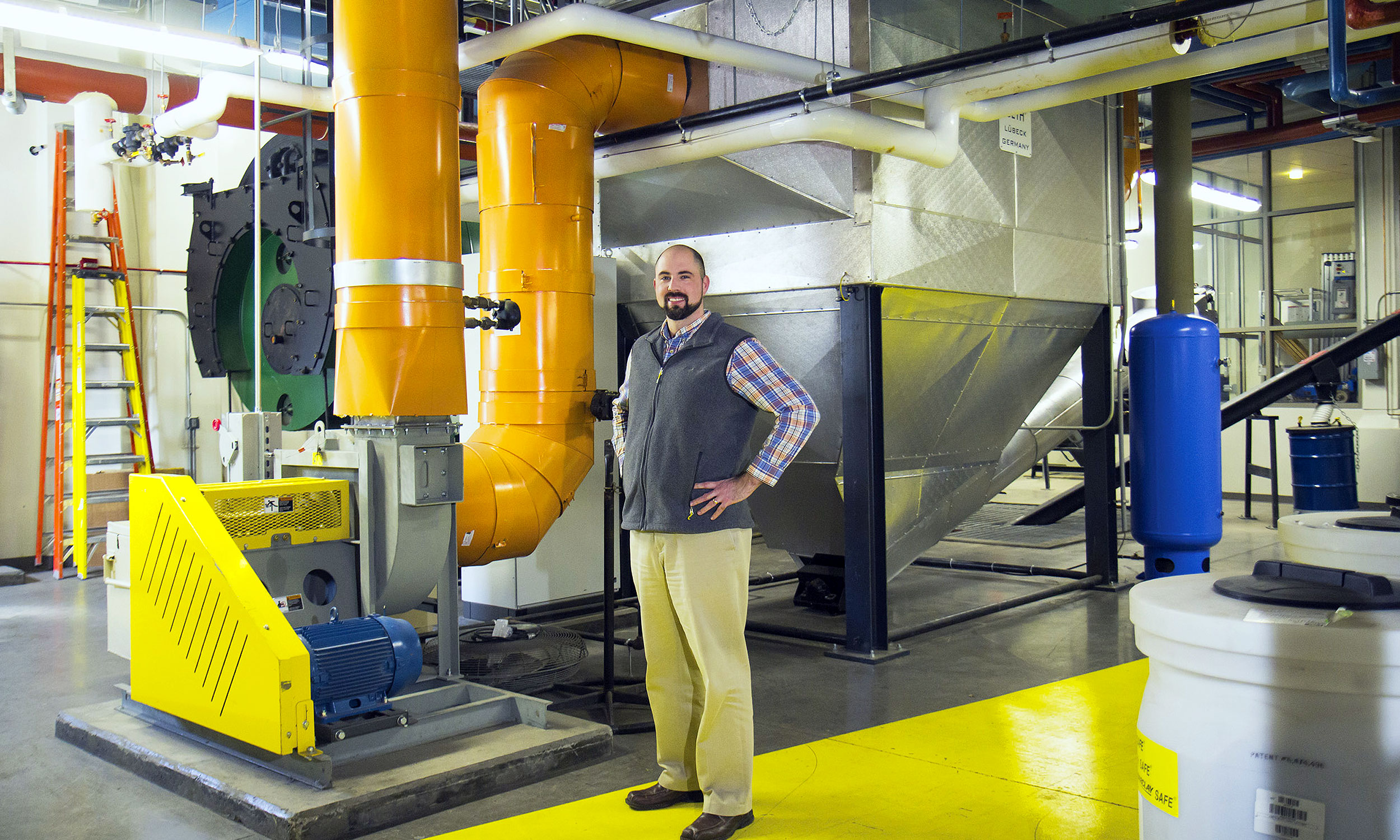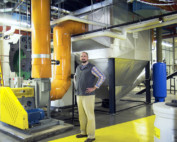ESF senior Ethan Requardt —sustainable energy management major, Energy Club president and passionate promoter of sustainability — keeps a close watch on the College’s sustainability efforts. “We’re on the right track and we have a lot of projects in the works to make our school better. I think we’re doing really well overall,” said Requardt, whose favorite place to study is the LEED Platinum-certified Gateway Center. Over the past several months, ESF has garnered significant recognition for its sustainability and “green” efforts:
- The College received a STARS Gold rating, the second-highest distinction available, from the Association for the Advancement of Sustainability in Higher Education (AASHE) and was recognized for its achievements in AASHE’s 2016 Sustainable Campus Index of Top Performers.
- ESF was ranked among the nation’s top “Cool Schools” by Sierra magazine, the national magazine of the Sierra Club. Sierra put the College at No. 2 among 200 schools surveyed.
- A month after the Sierra list was published, ESF was ranked No. 2 among the nation’s “green colleges,” according to The Princeton Review.
The ratings are rooted in actions ESF has taken over the past several years to increase the sustainability of its operations overall and, in particular, to reduce its carbon footprint.
Michael Kelleher, who was ESF’s first executive director of energy and sustainability, looks at the growth of the College’s sustainability efforts and sees an institution that took some chances and made significant progress.
“We tend to be self-critical, but we’ve actually tried a lot and we’ve done a lot of good things,” said Kelleher, who moved on to teach in the sustainable energy management program. “Ninety-nine percent of people out there would not have tried to do something like we did in building the Gateway Center, with its own power plant. But you’ve got to try things. You’ve got to reach for things.”
ESF’s Department of Physical Plant and Facilities has played a significant role in the College’s sustainability efforts. Some of the work is broad, such as re-evaluating historic practices to verify the need for continued operation of energy-consuming equipment; some is ongoing, such as continuously maintaining and replacing equipment that contributes to excess energy consumption; and some has targeted specific improvements, such as replacing fume hood controls at Jahn Laboratory to reduce the volume of conditioned air being exhausted from the building.
In addition, Brian Boothroyd, assistant director of physical plant for facilities, submitted the successful Operations and Maintenance Acceleration Program grant application to the New York Power Authority, thereby securing funding to support the hiring of ESF’s first energy manager, Joshua Arnold.
The most visible piece of ESF’s sustainability effort is the LEED Platinum-certified Gateway Center. The key to the building’s impact on cutting energy costs is the combined heat-and-power (CHP) plant.
Arnold said the CHP enabled the College to avoid $226,000 in utility costs between June and December 2016. This year, from January to June, the cost savings are expected to be $305,000 (without accounting for overhead). The CHP supplies steam to the Gateway Center, Moon Library, Jahn and Baker laboratories, and half of Illick Hall. Eventually, the CHP may be at least partially fueled by pellets that incorporate shrub willow grown as part of an ESF pollution remediation project on the shores of nearby Onondaga Lake.
Other initiatives that are reducing ESF’s energy use:
- An energy audit of the main campus and the Ranger School is being conducted by Trane, part of Ingersoll Rand. The audit will provide information that will be the basis of a College energy master plan.
- A campuswide relamping project is underway, replacing existing bulbs with more energy-efficient LED bulbs.
- Energy-monitoring software called Building OS is being installed on campus so students, faculty and staff can see how specific buildings are performing in terms of energy use.
- The College is establishing a Green Revolving Fund to provide money for projects that will generate savings that go back into the fund.
A Campus Sustainability Committee was established in April 2016. It has a charge to “plan, guide, develop, monitor and evaluate ESF’s efforts related to sustainability.”
Mark Lichtenstein, ESF’s executive director of sustainability, credits his predecessors with building the foundation for success and ongoing improvements.
“President Wheeler has asked us to develop a ‘Path to Platinum’ with the goal of achieving STARS Platinum status, and I am excited about what that means for the College. We have much work to do, but with our students, College-wide Sustainability Committee and faculty and staff working together, I’m confident we’ll achieve even greater things in the near future.”
ESF President Quentin Wheeler said ESF’s sustainability work reflects some of the background of SUNY’s incoming chancellor, Dr. Kristina M. Johnson, who will take office in September.
“Dr. Johnson brings a unique combination of experiences to her new position, including her work as an undersecretary in the U.S. Department of Energy and as an inventor and entrepreneur,” Wheeler said. “Her background in engineering and energy, and a deep appreciation and affinity for environmental sustainability align well with ESF. I look forward to working with her to advance the interests of both ESF and SUNY.”







